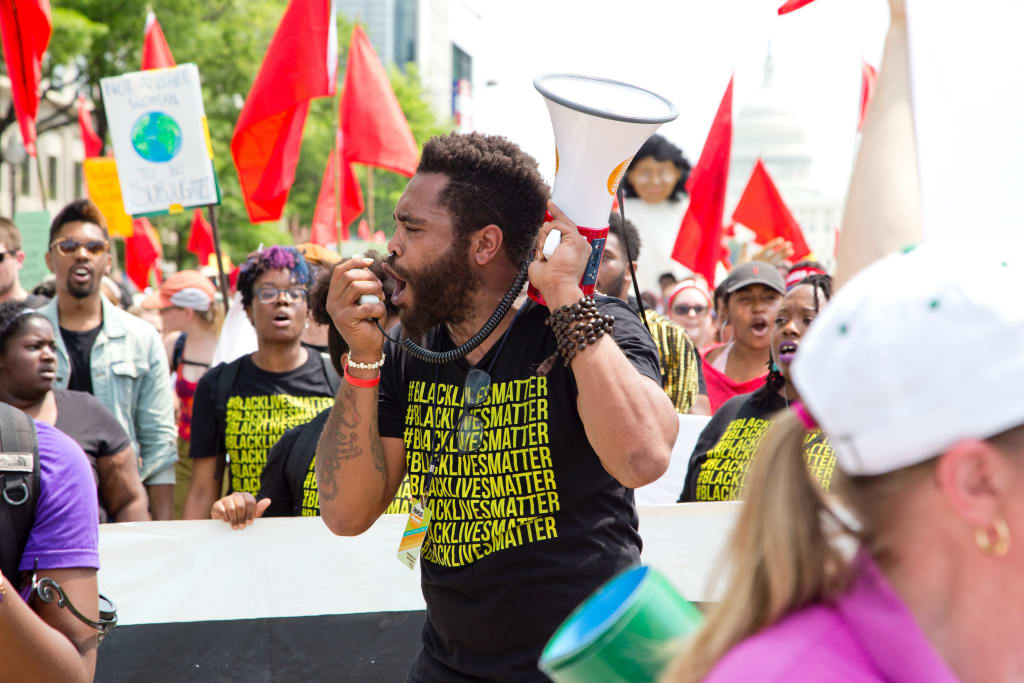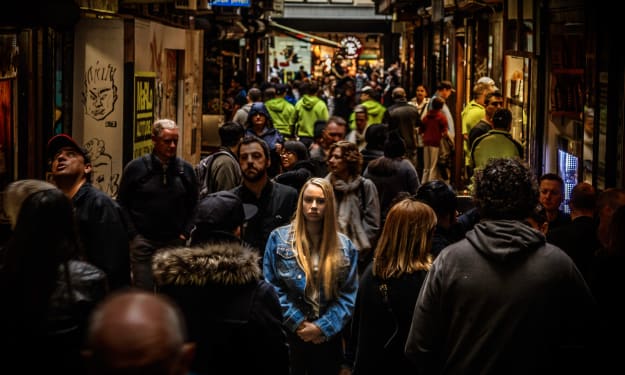White Shock in the Face of Racism
How Our Own Fragility Keeps Us From Being the Allies that POC Need

Growing up in suburban Utah, I didn’t give much thought to race. I didn’t think of my whiteness as a luxury or think about the fact that despite attending a school that was in a primarily Hispanic neighborhood, I didn’t have any Hispanic friends. Although the Mormon church had a rocky and troubled history with black members, that was in the past—during the civil rights movement, church policy had been changed to be more welcoming. It was over. Civil rights had solved racism. It was important to be polite to people, but it wasn’t like those few suburban black kids I knew had experienced a dramatically different life than I had. Though I had relatives who complained about those “immigrants” who wouldn’t learn English, obviously their complaint had nothing to do with skin color.
In college, one of my friends from New York admitted that they instinctively found themselves being friendlier to people of color, because Utah was so terribly white. Like the privileged white girl I was, it had never occurred to me that being lost in a sea of people who looked different could be intimidating.
After college I traveled for a while, hopping working visas in an attempt to see as much of the world as a poor girl could. Meeting people from all walks of life was the whole point, and I made friends of all sorts. Still, nothing could prepare me for Alice Springs, Australia.
Alice Springs is the last bastion of civilization in the outback, a small town of 25K with the nearest city over a thousand kilometers away. I stumbled my way into the town, my credit cards maxed out and in desperate need of a job. Two résumés and an afternoon later I had a waitressing job for a tiny Italian restaurant. My bosses were great, from the little Italian couple that ran the kitchen to their daughter who managed us front of house staff. As part of training, I was shown a sheaf of papers—banned customers. There were maybe forty or fifty of them, all black, all clearly aboriginal heritage. I thought it was strange, but I’d already had it explained that they were banned because of intoxication or rudeness. I thought it was unfortunate that these people lived in poverty, but understood that a restaurant owner would just want to keep the peace.
Of course, they hadn’t banned Mr. Irish Coffee, who was incapable of even sitting calmly at the table with his wife and child without becoming belligerently drunk. Nor the grizzled old man who would come up to get a better glimpse of my tits when he threw some coins into my tips. I hadn’t initially seen the way the pizza chef reminded me of the redneck, boastful guys back home, but once I saw it I couldn’t miss it. It only took watching a few interactions with black people in the community to realize that my employers were racially profiling potential customers, often refusing service to “rude” folks. It wasn’t long before I started seeing other black community members being excluded for not having the right attire, for loitering, or simply for speaking to the wrong person.
While I was there, racial violence was rocking through Alice Springs. It was summer and a white tourist had been stabbed earlier that Spring. I’d spent my first few weeks getting to know Alice Springs with a backpacker friend from L.A. She was black, and I hadn’t thought much about it until I started moving around on my own. Suddenly, the angry shouts were directed at me. Suddenly, the poorer parts of town—the dry riverbed, the garden park, the place where the suburbs met deserts, were ominous. The restaurant where I was at had a brick thrown through the window. A group of kids knocked over my motorbike, flooding the engine and breaking off one of the mirrors.
Maybe I should have been angrier. But I’d been out to the Aboriginal villages. I’d seen the community centers that were less sturdy than bus stops. I’d seen the kids playing in dirt with sticks. I’d spoken to eloquent, beautiful women who spent their whole day finding ways to make a can of beans last an extra day. I saw men who were torn between a desire to support their families, and a need to leave their familial home in order to find work. I saw countless homeless families living without shelter as the unforgiving Australian sun began starting wildfires that consumed whole neighborhoods.
I’ve always leaned a little left, though my politics tend to be quiet. I could see systemic racism when it was shoved in my face, and I was appalled. This was the world of the Jim Crow era. This was a segregated world where people of color lived completely different lives than their white neighbors. This wasn’t the world I had expected to see in a western country, and I was horrified.
When I came home, at first I was relieved to see the world again normal. Poor, black neighborhoods in the western U.S. look a lot like poor white neighborhoods. It is so much easier to see the way class defines our lives, focusing on the evils of the very rich. In our status quo, it can be hard to see the way that our own racial tensions filter through every aspect of our world.
Once you see it, you can’t stop. You see it in the way your Asian friend always gets ID’d in restaurants, in the way people casually call their Hispanic neighbors “Amigo,” in the way cop cars are on every couple of streets in the black neighborhoods. You see it in the surprise on the cashier’s face when a black woman pulls out that heavy Mastercard Black card, and on the laughter when a small black child proclaims her intention to become a doctor and the black musician whose music is categorized as R&B even though it is actually influenced mostly by pop-rock. You see it in résumés thrown in the trash, in promotions that go to other employees, in handshakes that aren’t given.
Then, something like Charlottesville or Flint or Trayvon Martin happens—and all of a sudden white people are shocked. They don’t understand how America can be so racist. After all, as I was taught in school—the Civil Rights Movement already happened. Racism is over. We beat that hurdle. They want to blame the black community for the violence committed against them. Maybe if they weren’t so rude, didn’t drink so much, weren’t so poorly dressed, then the cops would have treated them differently.
Like admitting than a lover is abusive, emotionally manipulative, or just unkind, it can be painful for us to change the way we think about our home. It hurts to think that some of our neighbors are hateful, that people of color suffer indignities every day, or that we ourselves have been part of the problem. It can be hard to accept that we are privileged when we never have enough cash to pay the bills, or when the demeaning job looks like it is turning into a permanent part of our lives.
But admitting the problem is the first part of fixing it.
As white people, we have to admit that America is built on hate. It is built on total disregard for people of color. It is built on the backs of slaves and murdered children and widowed wives. That is America. And unless we remove the golden veneer to scrape the rot out of our lives, sepsis will take hold and the United States will fall apart.
As white allies we have to stop being so shocked when a black child is murdered. We have to understand that this is only part of the big picture of racism. We have to accept that people of color face discrimination in all aspects of their lives. We have to understand that this IS our world, not an exception. Unless we stand together, unless we actively work to upset that world, unless we devote ourselves to protecting the oppressed, we cannot possibly hope to ever see an America that we can be proud to call home.






Comments
There are no comments for this story
Be the first to respond and start the conversation.